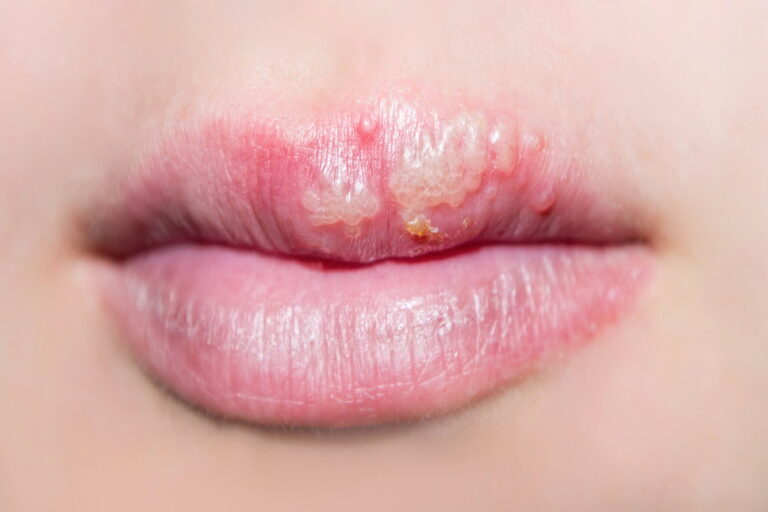EMF Guide from EUROPAEM: Protection & Prevention
Did you know that more than 20 positions on health and electromagnetic fields (EMF) have been adopted by researchers and physicians in the last 20 years? This highlights the growing concern about the health effects of electromagnetic fields in the modern world. Not only in Germany, but worldwide, there is a growing awareness of the importance of protection against EMF health risks.
The European Academy of Environmental Medicine (EUROPAEM) has therefore developed a comprehensive EMF guide based on the latest scientific findings. The guide aims to provide preventive measures and protective strategies against the potential health risks of electromagnetic fields. It incorporates the work and research of leading experts from Germany, Austria and Switzerland.
With detailed recommendations and clear guidelines, the EMF guidelines help both individuals and institutions to minimize their exposure to electromagnetic fields and thus improve EMF prevention. The EUROPAEM guidelines set a new standard for safety and prevention in dealing with EMF.
Introduction to the EUROPAEM EMF Guide
The EUROPAEM EMF Guide provides comprehensive guidelines aimed at the prevention of health problems from electromagnetic radiation. EUROPAEM, a consortium of international researchers and health professionals, has developed the guide to provide a systematic approach to the diagnosis, treatment and prevention of health problems caused by electromagnetic radiation.
The guidelines are based on extensive scientific research and numerous studies that prove that electromagnetic radiation can have significant effects on health. For example, the International Agency for Research on Cancer (IARC) has classified electromagnetic fields as possibly carcinogenic (Group 2B). This underlines the urgency of complying with and implementing EMF guidelines.
One of the central objectives of EUROPAEM’s EMF guidelines is EMF protection. This includes minimizing exposure to electromagnetic fields in residential and working environments as well as in public spaces. The guide proposes specific measures to reduce the risk of EMF exposure, underpinned by long-term scientific evidence.
The importance of the guidelines is also reflected in the latest health statistics: In Germany, cases of incapacity for work and days of absence due to mental illness more than doubled between 1994 and 2011. This development can be partly attributed to increasing exposure to environmental stressors such as electromagnetic radiation. Data also shows that psychotropic medications rank third in prescriptions of all medications in Germany, emphasizing the need for preventive health care.
In summary, EUROPAEM’s EMF guidelines provide valuable recommendations for reducing EMF exposure and actively contribute to the promotion of health and well-being. By applying these EMF guidelines, an important foundation can be laid for protection against the potential dangers of electromagnetic radiation.
Health effects of EMF exposure
The health effects of long-term exposure to electromagnetic fields (EMF) are a growing concern. Various studies indicate that EMF health risks should be taken seriously. Scientific research shows potential links between EMFs and a number of health problems, including cancer development and neurological disorders.
Cancer risks
Much of the research focuses on the link between EMF and cancer development. The International Agency for Research on Cancer (IARC) classified extremely low frequency magnetic fields (ELF MF) as possibly carcinogenic to humans as early as 2002. A 2015 study showed significantly reduced survival rates in patients with glioblastoma multiforme associated with wireless phone use.
In addition, the BioInitiative Report from 2012 reports that children exposed to ELF between 1mG (0.1 µT) and 2mG (0.2 µT) at home have poorer leukemia survival rates. A further increase in the risk of leukemia was observed at exposure levels above 0.3 or 0.4 µT.
Neurological effects
A comprehensive analysis of the neurological effects of electromagnetic radiation shows alarming results. Studies show that EMF can have an influence on the development of neurological disorders such as Alzheimer’s disease and cognitive impairment. In Germany, cases of incapacity for work and days of absence due to mental disorders more than doubled between 1994 and 2011. In 2011, the IARC also classified radiofrequency radiation as possibly carcinogenic, which makes further investigations necessary.
Particularly striking is the increase in the consumption of psychotropic drugs, which are the third most prescribed medication in Germany. This could be related to the increase in EMF exposure and the associated neurological effects.
„As researchers, we have a duty to warn the public of potential health risks and encourage further studies to understand the long-term effects of EMF exposure.“ – Prof. Dr. Andreas Karvonen
The need for more in-depth research is obvious. Over 20 position papers and resolutions have been adopted by EMF researchers and physicians in the last 20 years to highlight the health risks and call for safe exposure limits. Over 220 scientists from 42 countries have signed an international appeal to the UN and WHO to regulate non-ionizing electromagnetic field exposure.
Recommendations for reducing EMF exposure
Minimizing the electromagnetic fields in our environment is crucial to reducing the risk of health effects. Various protective measures can be implemented both in private households and in public spaces.
Home and workplace measures
There are various strategies to reduce EMF exposure in homes and workplaces. Here are some effective measures:
- Use wired devices instead of wireless technologies such as WLAN and DECT phones. This can help to reduce electromagnetic fields.
- Switch off and disconnect electrical appliances when they are not in use.
- Shielding of sleeping areas with special EMF protective fabric or switch-off plugs.
- Regular monitoring of EMF exposure by specialized experts in order to take targeted protective measures.
A study by Allianz has shown that the reduction of EMF exposure in the workplace has reduced the absenteeism rate of employees from 5% to 3%. This underlines the importance of minimizing EMF to create a healthier working environment.
Public spaces
EMF minimization is also of great importance in public spaces, as more and more reports of health problems caused by electromagnetic fields are becoming known. Heavy users of cell phones have been shown to have an increased risk of developing a brain tumor, according to the International Agency for Research on Cancer (IARC). In addition, the introduction of DAB+ radio technology has increased transmission power tenfold in cities such as Stuttgart and Heidelberg, leading to worsening symptoms in sensitive individuals.
- Restricting the use of cell phones and other wireless devices in public areas.
- Implementation of EMF protection measures in schools and kindergartens to protect particularly vulnerable children.
- Encouraging the use of low-radio devices and providing information on the potential dangers of EMF exposure.
A report by the BioInitiative (2012) concluded that the current safety limits for EMF exposure are not sufficient to protect public health. Accordingly, it is essential that effective protective measures are taken in both private and public areas to reduce electromagnetic fields and thus promote the health and well-being of the population.
Diagnosis of EMF-related complaints
The diagnosis of EMF-related health complaints is a growing challenge. A variety of symptoms, including headaches, sleep problems and nervousness, are associated with EMF exposure. In a recent survey, 58% of respondents reported suffering from sleep problems and 41% reported frequent headaches. This highlights the need for a thorough EMF diagnosis.

Clinical procedures
A clinical examination is crucial to diagnose the health complaints associated with EMF. Various diagnostic techniques are used to identify EMF sensitivity. For example, a 2017 scientific study showed abnormalities in patients with electrohypersensitivity using functional magnetic resonance imaging (fMRI). Live blood analysis also plays an important role by revealing changes in the size and shape of erythrocytes, which can indicate impaired health.
Patient reports
Patient reports are an essential component in the identification of EMF-related complaints. Many sufferers describe symptoms such as tiredness, difficulty concentrating and nervousness, with 74% identifying mobile phone base stations and 36% cell phones as the main causes. Despite concerns, only 13% of sufferers seek help from their GP, indicating a significant level of helplessness within the medical profession. In addition, patients report that their symptoms subside or disappear as soon as they no longer experience EMF exposure. Electrosensitivity has been recognized as a diagnosable disorder in Austria since 2012, which underlines the importance of patient reports in detection and treatment.
Prevention strategies to avoid EMF exposure
In order to make EMF prevention efficient, it is important to integrate various risk reduction strategies. These include personal measures such as minimizing cell phone use and political measures to regulate transmission power.
The World Health Organization (WHO) has classified the radiation emitted by cell phones as „possibly carcinogenic“. This underlines the need for health precautions, especially for heavy cell phone users, who have a 40% increased risk of developing a brain tumor if they talk on the phone for 30 minutes a day over 10 years.
Another problem is the tenfold increase in DAB+ transmission power in cities such as Stuttgart and Heidelberg. Since the introduction of DAB+ in August 2011, electrosensitive people have reported a significant worsening of their symptoms. These reports show that EMF prevention is essential.
An important aspect of EMF prevention is compliance with the national exposure limit values. In Switzerland, this limit value is 61 V/m, while the installation limit value is 6 V/m. This illustrates the efforts being made to implement risk reduction strategies in order to ensure health precautions.
The following table summarizes some measures and their effects on health:
| Measure | Effect |
|---|---|
| Reduction in cell phone use | Reduction of brain tumor risk by 40% |
| Transmitter dismantling | Decrease in clinical symptoms |
| Elimination of electrosmog in the workplace | Sickness absence rate down 2% |
It is clear that both individual and policy measures are required to effectively implement EMF prevention. Risk reduction strategies must be carefully planned and continuously monitored to create a healthy environment.
Electromagnetic hypersensitivity (EHS): symptoms and treatment
Electrosensitivity, also known as electromagnetic hypersensitivity (EHS), refers to a group of non-specific symptoms that are attributed to exposure to electromagnetic fields (EMF). This condition is increasingly the subject of scientific research and social debate.
Symptoms of EHS
People who suffer from symptoms of EHS often report a variety of health complaints. These include headaches, fatigue, dizziness, concentration problems, sleep disorders and skin rashes. The prevalence of electro-hypersensitivity (EHS) in international studies varies widely, ranging from 1.5% to 13.5%. Particularly severely affected individuals make up around 1.2% of the population. It is estimated that there are around 157,000 people affected by EHS in Bavaria and around 1,000,000 in Germany as a whole.
Treatment options
EHS treatment focuses primarily on alleviating symptoms and reducing EMF exposure. Doctors and therapists often recommend a combination of medical approaches and environmental adjustments. Certain EHS treatment measures include:
- Use of EMF shielding materials in living and working areas
- Reduce the use of electronic devices, especially WLAN and cell phones
- Dietary changes and dietary supplements to strengthen the immune system
In addition, there are specialized housing offers for electrosensitive people in many regions. These homes are often free of WLAN and DECT, have low radiation levels of less than 1 µW/m² and a greater distance from mobile phone masts. These adapted living conditions can help to significantly alleviate the symptoms of EHS and enable those affected to lead a normal everyday life.
Electrosensitivity continues to be the subject of intensive research and EHS treatment is constantly evolving. Continuous research and adapted protective measures can significantly improve the quality of life and well-being of those affected.
Global scientific consensus and political measures
The discussion about EMF regulations has gained importance worldwide. With the increasing use of technologies that generate electromagnetic fields (EMF), the international community faces the challenge of developing balanced EMF legislation. The global scientific consensus emphasizes the need for careful research to better understand the potential health risks and take appropriate action.
Different countries have taken different approaches to EMF legislation. In Europe, for example, there are strict guidelines based on the recommendations of international organizations such as the World Health Organization (WHO) and the International Commission on Non-Ionizing Radiation Protection (ICNIRP). In other parts of the world, such as North America and Asia, comprehensive EMF regulations also exist, but the limit values and implementation strategies vary.
A key point of global scientific consensus is the need for further long-term studies to assess the long-term effects of EMF exposure on human health. These comprehensive studies should contribute to the development of more robust EMF legislation that keeps both the protection of the population and technological innovation in mind.
In a global context, it is clear that cooperation and the exchange of scientific knowledge are crucial in order to establish uniform EMF regulations. This ensures that the global scientific consensus is taken into account in all areas of EMF legislation and its practical implementation.
| Country | Guideline | Organization |
|---|---|---|
| Germany | Implicit EMF limit values | Federal Ministry for the Environment, Nature Conservation and Nuclear Safety |
| France | Strict EMF regulations | Agence nationale de sécurité sanitaire de l’alimentation, de l’environnement et du travail (ANSES) |
| USA | Varying EMF standards | Federal Communications Commission (FCC) |
| China | Nationally adapted EMF guidelines | Ministry of Industry and Information Technology (MIIT) |
Future research needs and technological innovations
The future of EMF research is critical as studies continue to shed light on the impact of electromagnetic fields on health. There is increasing evidence that chronic diseases and non-specific symptoms are influenced by environmental stressors, including EMFs. For example, the Environmental Burden of Disease Project found that nine environmental stressors are responsible for 3%–7% of the annual burden of disease in European countries, including Germany. In light of these facts, continued scientific investigation is essential to develop accurate risk assessments and effective protective measures.
Technology development plays an essential role in reducing EMF exposure. Numerous positions and resolutions on EMF and health have been adopted over the last 20 years by researchers and physicians emphasizing the need for precautionary measures. For example, the European Environment Agency has compared the risks of non-ionizing radiation with other environmental hazards such as asbestos, benzene and tobacco and advocated a precautionary approach. These recommendations underline the need for technological innovation to reduce EMF exposure, for example through the development of new protective technologies and EMF-reduced devices.
Another area of research is mental illness, which has also been linked to EMFs. According to the Federal Chamber of Psychotherapists, the number of mental disorders, particularly burnout, increased sevenfold between 2004 and 2011. In 2012, 42% of early retirements in Germany were due to mental illnesses such as depression. This highlights the urgency of further investigating the link between EMF exposure and mental health and developing new protective technologies to minimize the burden on the population.
In addition, innovations and strategies must be developed to effectively control and reduce exposure. Recommendations such as those from the Highest Health Council of the Austrian Ministry of Health suggest that exposure levels from RF devices should be reduced by at least a factor of 100 below the European Commission’s guideline values. Such measures could help to minimize health risks and increase the protection of the population.





